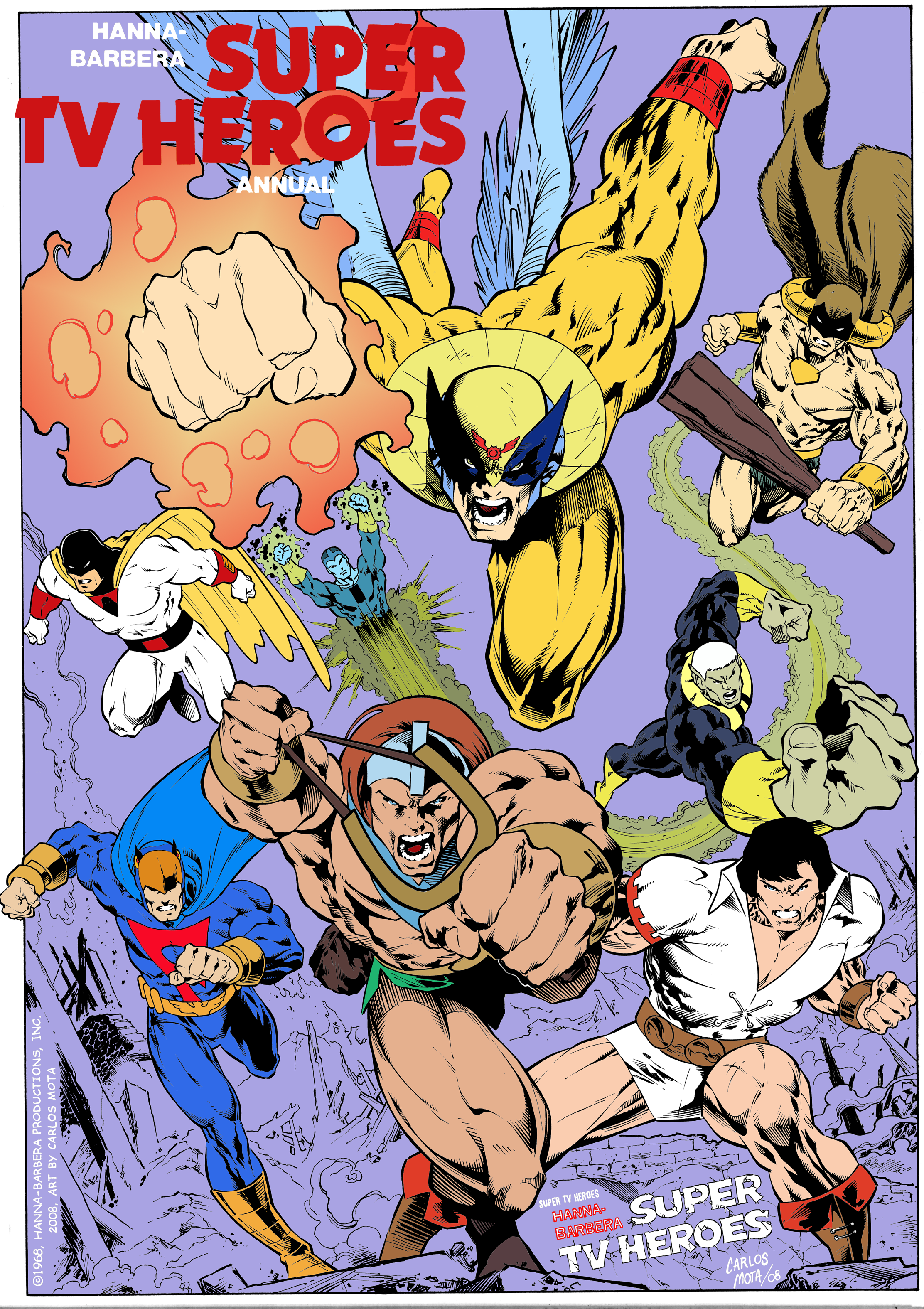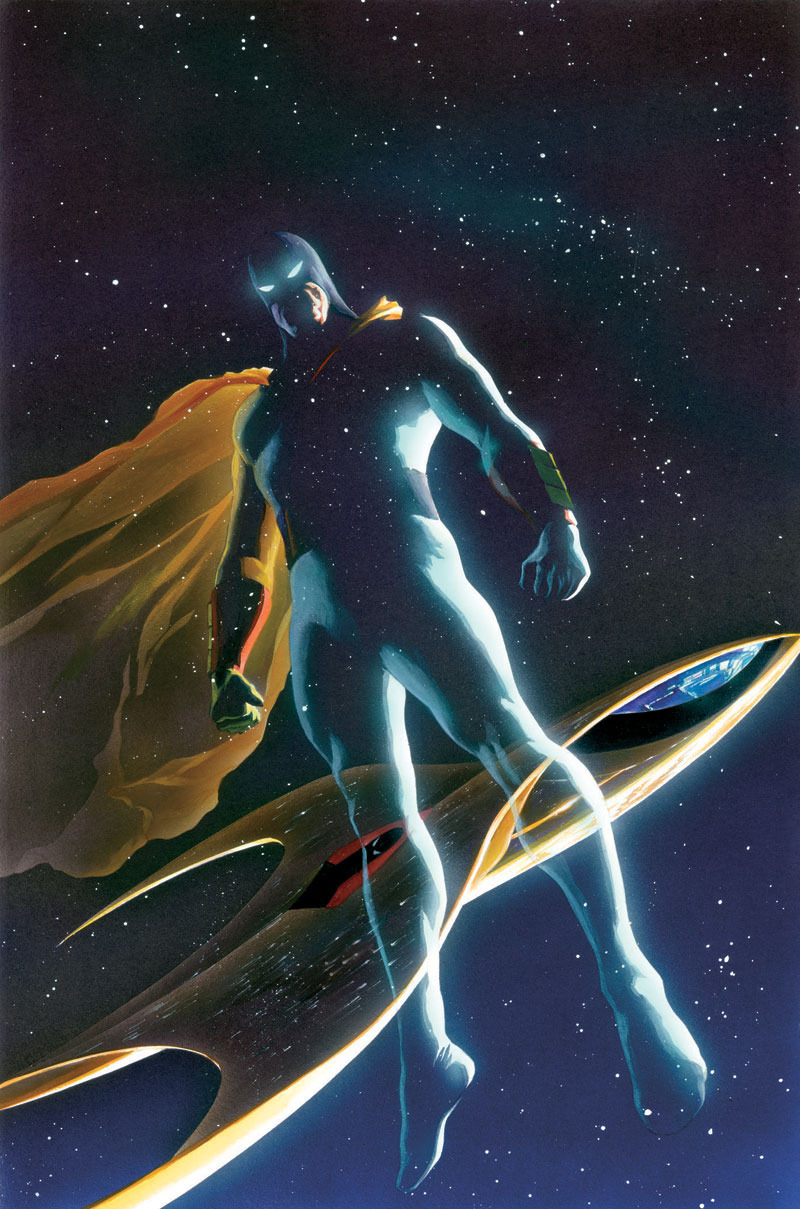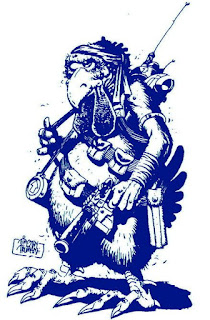October 11, 1979, was (according to Mike's Amazing World of Comics) was likely the date that the first batch of DC Comics cover dated January 1980 appeared on the racks.
One difference between DC's output his this period and the latter half of the 80s is readily apparent: There are a lot more nonsuperhero titles being published. Only fifteen (if we don't count Swamp Thing) of 29 titles published with this cover date are superhero titles; The rest are war, horror, western, and one sword & sorcery.
Anyway, let's look at this first batch of issues:
All-Out War #3: This is a Dollar Comic format war anthology, fronted by Kanigher's Viking Commando, who I always found conceptually dubious. Here he has a forgettable adventure, working for the Allies and calling the Germans "Huns," because that's his thing. The other recurring characters in this issue, I had never heard of before. They didn't make the Who's Who even. Black Eagle is the titular leader of a group of Tuskegee Airmen Blackhawk-types. "Guerilla War staring Force 3" is but an American, a Pole, and a Greek resisting Nazis in the Mediterranean. Both of these stories are perfunctory, but the art by Jerry Grandinetti on the Force 3 piece, "Dominoes of Death," is off-beat--thick-lined and a bit Toth-y, perhaps--and interesting. I barely remember anything about the other two stories here, and I read it last week.
Batman #319: Wein and Novick give pit Batman against the Gentleman Ghost. Nothing special, but it hits the right marks, so I don't think any Bat-fan who bought it off a spinner rack (this ain't a library, kid!) in '79 was unsatisfied. I wonder if we ever found out if the Gentleman Ghost was really a ghost or not? Catwoman is apparently reformed (and retired from costumed stuff) at this time, but has some sort of beef with Lucius Fox. Bruce is still living in town, not in (stately) Wayne Manor, though Alfred's there.
DC Comics Presents #17: Conway brings back Firestorm about a year after his short series dying in the Implosion to team up with Superman against Killer Frost who, as is often in the case with villains in team-ups, becomes powerful enough to give them both trouble. The artist here is the always great Jose Luis Garcia-Lopez. Superman offers Firestorm JLA membership at the end.
Flash #281: Cary Bates has Barry Allen in the middle of the length storyline about the murder of Iris. There are corrupt cops and Professor Zoom. This issues really drives home the transitional nature of this era at DC. The Don Heck cover could easily be on a Silver Age Comic, but the story itself is more gritty and 80s-like.
Ghosts #84: Bland horror analogy. One of the stories didn't even have a ghost, I don't think.
Jonah Hex #32: Long-time JH scribe Michael Fleischer and Garcia-Lopez deliver a decent but unspectacular tale of Hex going to confront a bounty hunter who had humiliated him when he was starting out, only to have a different sort of reckoning than he was imagining.
Justice League of America #174: This Conway and Dillin joint seems a bit like a Marvel story in the socially relevant (and blaxploitation) 70s. Green Arrow thinks the way the League treated Black Lightning (who GA wanted to join the team) last issue was basically racist, so he and so others go to try to track him down, but everybody gets sidetracked by an African American scientist in Suicide Slum using a device he control rats and giant rats into rampaging to get back at the Man. When the villain is defeated, Black Lightning still doesn't want to join the League, because he likes to play by his own rules.
Men of War #24: Gravedigger is a badass, black commando in World War II, dealing with racism on both sides of the conflict. His story here by Harris and Ayers is pretty good for a war anthology of the era, which may be damning with faint praise. Rosa by Kupperberg and Grandinetti (again with his unique style) is another character I'd never heard of: a mid-19th Century adventurer with a vaguely Dumas vibe. This story feels like there show be more too it, being more serial.
Secret of Haunted House #20: Better than Ghosts, this at least has one decent (for this sort of thing) yarn, then another where a couple of criminals are tricked by their own reflections. Destiny (later of the Endless) hosts.
Superman #343: Is a goofy, Silver Agey tale by O'Neil and Curt Swan about a wizard/seer from ancient Pompeii who keeps interpreting his visions wrong and messing things up. but ultimately Superman saves the day and teaches the wizard not to jump to conclusions. Of course, Pompeii is long destroyed, so lesson learned at last, I guess? This story buys into the conceit that Superman is not merely as vulnerable to magic as any normal person, but is specifically susceptible to it. Every Superman story published this month outside of the team-ups feels like a throwback compared to almost any Marvel title published this same month.
Superman Family #199: These stories feel less like throwbacks (well, except the "Mr. and Mrs. Superman" story, which does) and more like episodes of tv series that never existed. Supergirl takes on a guy who steals her (invulnerable) cape to sell to a crime boss, Lois Lane busts a sinister corporation testing mind control drugs on inner city school kids, and Jimmy Olsen foils a blackmail plot against one of his journalistic mentors who's harboring secret. All of these stories are pretty good in basic storytelling ways (baring in mind it's 1979 and a comic), but are utterly without the color and bombast one typically associates with superhero comics.
Weird War Tales #83: Doesn't have much to recommend it. Of note, however, is that only one of the three weird war tales in the issue takes place in World War II (Nazis versus vampires). The others are in the Syrian-Israel conflict and British Rhodesia, respectively. I guess eventually you can get too much WWII in comics!
Wonder Woman #263: I talked about a bit here.
Also on your local grocery magazine aisle at this time, two DC digests: Best of DC #3 (Superfriends) and Jonah Hex and Other Western Tales #3, and a Dollar Comic reprint issue, DC Special Series #20, featuring three Wein and Wrightson Swamp Thing tales.




























































